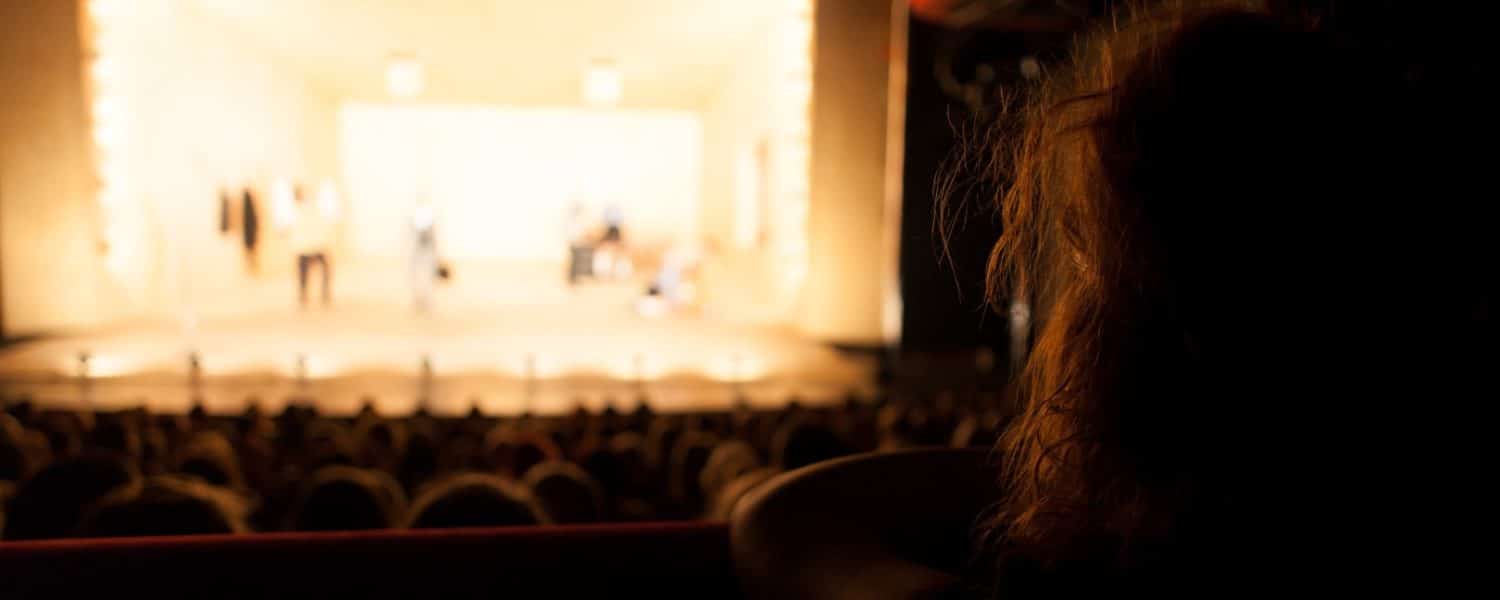By Bruce Bartlett
Plays and musicals are a serious challenge for the sound engineer. In these situations, it’s hard to get enough gain before feedback and to reproduce a natural sound. One reason is that some actors do not project well. Also, sound reflections from the floor can color the tone quality and give a hollow effect. Good microphones can help.
1. Floor Mics
Several microphone companies make stage-floor microphones for area pickup of drama. You place the mics on the stage floor near the footlights. These microphones are boundary mics with a half-supercardioid or half-cardioid polar pattern. This type is the industry-standard area mic for Broadway productions.
How can a microphone sound good on the floor? Let’s explain. Imagine that you have placed a conventional mic on a desk stand, on the stage floor. This mic will pick up each actor’s voice via two paths: direct from the actor, and reflected off the floor. Since the floor reflection has a longer travel path, its sound is delayed relative to the direct sound from the mouth. The direct and delayed sounds combine at the microphone, causing comb-filtering. This is phase interference that results in a series of peaks and dips in the frequency response – a hollow, colored tone quality.
In contrast, a boundary-type floor mic has a miniature mic capsule mounted directly on a plate on the floor. Direct and reflected sounds arrive at the mic capsule virtually at the same time, preventing phase interference in the audible range. The result is a flatter frequency response.
Floor mics tend to sound clear and natural, and usually can be turned up loud enough for everyone to hear the performance and understand the words.
However, wireless lavalier mics or headworn mics are even better in this regard. So if budget is not a problem, use wireless mics on the main actors and floor mics on everyone else.
You might wonder if floor mics pick up footsteps, since the microphones are on the floor. Floor mics are not sensitive to floor vibrations, but they do hear footsteps acoustically, like your ears. Normally this is not a problem because the audience sees and hears the actors walking across the stage.
Floor mics are designed to pick up sound from the front and reject sound from the rear. They pick up the actors, but do not pick up much of the pit orchestra or P.A. speakers. Floor mics will feed back like other mics; however, you can turn them up louder without feedback than most conventional mics.
In appearance, the floor microphone is nearly invisible, so it does not distract from the set. Some models are rugged enough to withstand kicks by dancers and can be stepped on without damage.
How do you use them? In a typical setup, you place three floor mics near the edge of the stage, evenly spaced. Place them as close as possible toward the actors. One or two floor mics might be enough for a small stage, but three or four are typical for large stages.
The more mics that are on, the muddier the sound, and the more feedback the system has. To aid clarity and reduce feedback, turn up as few mics as possible. For example, suppose an actor walks across the stage from left to right while talking. First turn up just the left mic, then turn it down while turning up the center mic. Then turn it down while turning up the right mic. Follow cues in the script so you know when to turn up various microphones.
2. Hanging Mics
Typically floor mics can “reach” about 20 feet. But if it’s hard to hear actors farther upstage, install one to three miniature hanging mics (also called choir mics). Being directional, mini hanging mics pick up from the front and rejects sound from rear, which reduces feedback.
You hang such a mic from the gridwork over the stage, near the upstage actors. A hanging mic comes in two parts – the microphone itself, and an electronics module at the end of a long cable. In some models, the electronics module mounts in a standard electrical outlet box. In other models, the electronics module is in a tube, which you plug into a mic cable. As with floor mics, hanging mics should be turned up and down as needed.
3. Wireless Lavalier Mic
Another way to pick up the main actors on stage is with a wireless lavalier mic, also known as a miniature clip-on microphone. You can clip one on clothing, or hang it over the actor’s forehead with the cable running through the hair. To prevent sweat damage, you might want to cover the mic with a thin plastic sandwich bag. Some models are water-resistant. You plug the mic into a belt-pack transmitter of your choice.
Since the mic is very close to the actor, the sound is louder and clearer than you get with a floor mic. As we said before, use mini wireless mics for the main actors, and floor mics for group pickup.
When you use a wireless mic, put the receiver on stage and run a cable back to your mixer. Since this keeps the path short between transmitter and receiver, it prevents dropouts and noise. If you want to monitor the receiver’s performance, put it back at the mixer. But make sure the transmitter has a line of sight to the receiver.
4. Wireless Headworn Mic
This type of microphone is worn on the head. The frame is made of thin wire that is rugged and lightweight. A slender, nearly invisible boom positions an omnidirectional mic capsule just to the side of the mouth. Since the mic placement is very close to the mouth, gain before feedback and clarity are excellent. This is the best-sounding type of microphone available today.
Whatever mics you use, it’s important to fine-tune the audio system for natural sound and minimal feedback. Using a graphic or parametric equalizer, or an automatic feedback controller, notch out frequencies that feed back. Use console equalization to tweak the tone quality of each microphone. You’ll be rewarded with a sound that is clear, natural, and loud enough to understand.
Microphone designer Bruce Bartlett has 30 years of experience at Shure and Crown International. Bartlett Audio was formed in 2009 to design and build high-quality microphones at a fair price and to offer excellent customer support direct from the designer, www.bartlettaudio.com.









